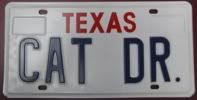Enamel (or PU) over epoxy sealed plywood - How? Primer?
21 posts
• Page 1 of 2 • 1, 2
Enamel (or PU) over epoxy sealed plywood - How? Primer?
I've sealed my TD plywood with several coats of thinned Raka epoxy. Now I need to paint it. Alkyd enamel sounds like an economical product to use so I'm interested in the details of how you do it.
I'm pretty sure that the epoxy needs to cure for a week or so, then be cleaned and sanded, but is a primer needed after that, and before the enamel? If so, what type should be used? Or, is it perfectly reasonable to apply the enamel to the sanded epoxy surface?
Same question if a two part polyurethane is used instead.
Thanks
John
I'm pretty sure that the epoxy needs to cure for a week or so, then be cleaned and sanded, but is a primer needed after that, and before the enamel? If so, what type should be used? Or, is it perfectly reasonable to apply the enamel to the sanded epoxy surface?
Same question if a two part polyurethane is used instead.
Thanks
John
- jmedclay
- Teardrop Master
- Posts: 107
- Images: 104
- Joined: Fri Dec 15, 2006 7:08 pm
- Location: North Florida
With wood; the primer acts as a sealer which you have already done with the epoxy. Give it a light sanding for bonding and begin painting
Strangers on this road we are on; we are not two, we are one - Raymond Douglas Davies
-

Ageless - Platinum Donating Member
- Posts: 1603
- Images: 8
- Joined: Tue Aug 04, 2009 8:34 am
- Location: Pt. Orchard, WA

 Mark (& Cindi)
Mark (& Cindi) 



 +1 on Brightsides!!
+1 on Brightsides!!
